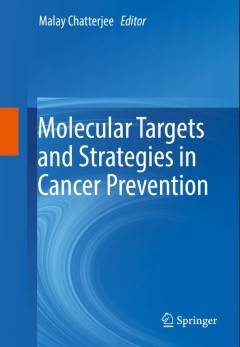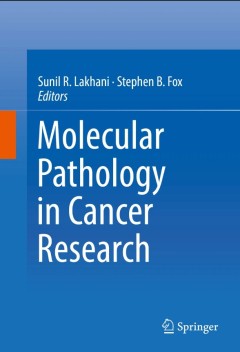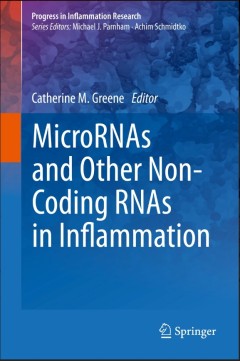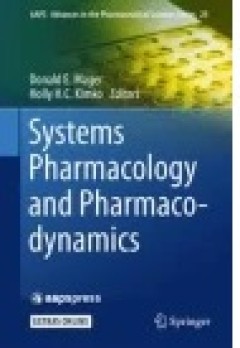Filter by

Molecular Targets and Strategies in Cancer Prevention
The book focuses on the understanding of molecular pathways by which normal cell progress to the definable stage of cancer. The chapters explore microbiota and chronic inflammation, multiple myeloma chemoprevention, microRNAs, cancer regulation, liquid biopsies, and angiogenesis. Recent advances of molecular risk assessment, tumor microenvironment, microneoplasia, malignant gene expressions are…
- Edition
- 1
- ISBN/ISSN
- 978-3-319-31252-1
- Collation
- V, 180
- Series Title
- -
- Call Number
- -

Molecular Pathology in Cancer Research
The aim of the book is to discuss the application of molecular pathology in cancer research, and its contribution in the classification of different tumors and identification of potential molecular targets, as well as how this knowledge may be translated into clinical practice, and the huge impact this field is likely to have in the next 5 to 10 years.
- Edition
- 1
- ISBN/ISSN
- 978-1-4939-6641-7
- Collation
- VIII, 369
- Series Title
- -
- Call Number
- -

Molecular Mechanisms of Cell Differentiation in Gonad Development
This book presents the current state of knowledge on the origin and differentiation of cell lines involved in the development of the vertebrate male and female gonads with particular emphasis on the mouse. It also discusses the processes leading to the testis- and ovary-specific structures and functions. The individual chapters review the origin and differentiation of the somatic cells of th…
- Edition
- 1
- ISBN/ISSN
- 978-3-319-31971-1
- Collation
- XII, 434
- Series Title
- Results and Problems in Cell Differentiation
- Call Number
- -

Trends in Breast Cancer Prevention
Includes the latest research on molecular strategies for breast cancer prevention Explores the implications of breast cancer risk and preventative strategies during pregnancy Discusses therapeutic drugs, including tamoxifene, raloxifene, and aromatase inhibitors
- Edition
- 1
- ISBN/ISSN
- 978-3-319-27135-4
- Collation
- XVII, 284
- Series Title
- -
- Call Number
- -

MicroRNAs and Other Non-Coding RNAs in Inflammation
The book serves as a comprehensive resource for scientists and clinicians studying the role of non-coding RNAs in inflammation (viral infections, wound inflammation), human inflammatory diseases (i.e. rheumatoid arthritis, Crohn’s disease, diabetes) and innate immunity. It provides a universal reference work comprising both basic and specialized information. Given that ncRNAs represent new th…
- Edition
- 1
- ISBN/ISSN
- 978-3-319-13689-9
- Collation
- X
- Series Title
- Progress in Inflammation Research
- Call Number
- -

MicroRNAs and Other Non-Coding RNAs in Inflammation
The book serves as a comprehensive resource for scientists and clinicians studying the role of non-coding RNAs in inflammation (viral infections, wound inflammation), human inflammatory diseases (i.e. rheumatoid arthritis, Crohn’s disease, diabetes) and innate immunity. It provides a universal reference work comprising both basic and specialized information. Given that ncRNAs represent new th…
- Edition
- 1
- ISBN/ISSN
- 978-3-319-13688-2
- Collation
- X, 237
- Series Title
- Progress in Inflammation Research
- Call Number
- -

Systems Pharmacology and Pharmacodynamics
While systems biology and pharmacodynamics have evolved in parallel, there are significant interrelationships that can enhance drug discovery and enable optimized therapy for each patient. Systems pharmacology is the relatively new discipline that is the interface between these two methods. This book is the first to cover the expertise from systems biology and pharmacodynamics researchers, desc…
- Edition
- -
- ISBN/ISSN
- 978-3-319-44534-2
- Collation
- XIII, 511
- Series Title
- AAPS Advances in the Pharmaceutical Sciences Series
- Call Number
- -

Transport Phenomena in Multiphase Flows
This textbook provides a thorough presentation of the phenomena related to the transport of mass, momentum and energy. It lays all the basic physical principles, then for the more advanced readers, it offers an in-depth treatment with advanced mathematical derivations and ends with some useful applications of the models and equations in specific settings. The important idea behind the book is …
- Edition
- 1
- ISBN/ISSN
- 978-3-319-15792-4
- Collation
- XV, 459
- Series Title
- Fluid Mechanics and Its Applications
- Call Number
- -

Kala Azar in South Asia: Current Status and Sustainable Challenges
Visceral leishmaniasis (VL), (also known as black fever or Kala-azar) is a life-threatening disease first reported from the Indian subcontinent. VL ranks as the world’s second largest parasitic disease killer and is a neglected tropical disease. Most of those infected by this life-threatening disease are uneducated daily wagers working to support their families, and vectors easily disseminate…
- Edition
- -
- ISBN/ISSN
- 978-3-319-47101-3
- Collation
- -
- Series Title
- -
- Call Number
- -

Translational Research in Pain and Itch
This book provides a comprehensive review of the latest advances in translational pain and itch research, and presents the cutting-edge developments in the study of our two principal, yet most mysteries sensations. Despite the slow progress in the discovery of effective therapies for chronic pain and pruritus, scientists around the globe now have a better understanding of why and how these cond…
- Edition
- 1
- ISBN/ISSN
- 978-94-017-7535-9
- Collation
- XI, 147
- Series Title
- Advances in Experimental Medicine and Biology
- Call Number
- -
 Computer Science, Information & General Works
Computer Science, Information & General Works  Philosophy & Psychology
Philosophy & Psychology  Religion
Religion  Social Sciences
Social Sciences  Language
Language  Pure Science
Pure Science  Applied Sciences
Applied Sciences  Art & Recreation
Art & Recreation  Literature
Literature  History & Geography
History & Geography